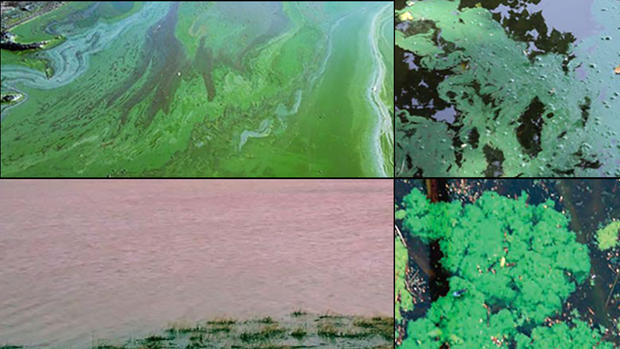Toxic Algal Blooms Detected At Big Bear Lake, Lake Isabella
BIG BEAR CITY (CBSLA) — Toxic algal blooms have been detected at Big Bear Lake and Lake Isabella.
The harmful algal blooms at Big Bear Lake in San Bernardino County and Lake Isabella in Kern County, which can appear to be bright- to dull-green and sometimes looks like spilled paint, can make people and animals sick. Water samples from both lakes taken this month indicated the presence of algal organisms called cyanobacteria.
The State Water Resources Control Board and Santa Ana Regional Water Quality Control board say the toxic algal bloom was detected in the water near the shore at Mallard Lagoon, Kidd Cove and on the western side of Stanfield Cutoff in Big Bear Lake. The bloom conditions could change with the flow of surface water and wind, causing it to move or become concentrated in a different area, officials said.
Another harmful algal bloom was detected a Big Bear Lake's Mallard Lagoon last month, but it's unclear if the blooms are related.
At Lake Isabella, which is about 40 miles northeast of Bakersfield and surrounded by the Sequoia National Forest, the toxic samples were detected near the shoreline at all 13 routine sampling locations. Signs have been posted at each of the sampled sites warning against swimming and urging people and animals to avoid discolored water and algal material, and an elevated advisory of "danger" was posted on the eastern end of the lake at Stine Cove and Kissack Bay. A "caution" sign was posted at the south western Auxiliary Dam Boat Launch.
State water officials say the harmful algal blooms can resemble paint or soup, bubbling scum, spit-like floating foam or lettuce or chopped grass. Algae and aquatic plants are usually green, but they can appear yellow or brown as they die down. Cyanobacteria gets its name from their blue-green pigment, but can appear green, blue-green, green-brown or red, and can smell like gasoline, septic or fishy, according to a guide from the California Water Board.
People and dogs should avoid swimming or contact with the water where algal blooms were detected at both lakes.
Fish caught at the locations where the algal bloom was detected should not be consumed until the advisory is lifted. Fillets from fish caught at other locations at either lake can still be consumed if the guts are thrown away and the fillets are cleaned with tap water or bottled water before cooking, water officials said.




